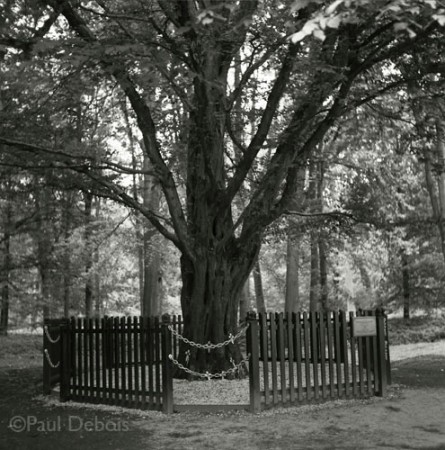I went to a Remembrance Day service this morning. It was a shame that a local resident decided 11am was an appropriate time to start manoeuvring a car next to the memorial. Couldn’t even wait a couple of minutes. It made me think about some of the sites I’d visited over the last 18 months – Thiepval, Fromelles and Delville Wood. Amazing places to see, though very sad.
Tag Archives: Somme
Somme Valley
After photographing the Fromelles WW1 cemetery for a job last June, I had an all too brief visit to the Somme Valley region. This was quite rushed, and I was keen to revisit the area to spend more time at significant sites. The opportunity arose a couple of weeks ago, after a trip to Monet’s garden at Giverny. There’s not a great deal I can add to the history, but here is a gallery of some of the photographs I took.
A fairly small memorial commemorates the fighting that took place here at Mouquet Farm, where in all, around 7000 Australians were killed trying to advance up the hill towards the trees in the centre of the frame. This was originally where the farm stood before being virtually wiped of the map.
Turning your back on the memorial gives a view of the position the allies advanced from.
Delville Wood, or Devil Wood as it became known, was the scene of more fierce fighting, this time with South African troops. There is a graveyard at the site, but far more men lay undiscovered in the wooded area, which was completely replanted as a memorial after the war.
The Last Tree is apparently the only surviving tree from the war – a Hawthorn, with visible shrapnel.
The Canadian Army also fought in the Somme. There is a large monument at Beaumont-Hamel called Newfoundland Memorial Park, with preserved trenches, and a petrified tree, known as the danger tree. Reputedly it was the only landmark left for soldiers to use as a guide back to their own lines. Any soldier near this tree was in the range of German machine gunners.
Near the town of Albert, there is a huge crater, known as the Lochnavar Crater. British troops dug a tunnel under the German lines and set off a huge mine, consisting of 27,000kg of high explosive. Apparently this was the loudest man made sound in history.
I have seen few German WW1 cemeteries, but I stumbled upon one at Bray Sur Somme. It was sad to see Jewish and Christian burials side-by-side, something inconceivable 20 years later.
The Somme memorial at Thiepval
Two days ago I had the opportunity to visit the Somme region in Northern France whilst on an assignment. I have driven past the area countless times on car shoots, but this time I made a particular point of stopping and visiting some of the World War One cemeteries.
The most moving was at Thiepval, which is the site of the largest British war memorial in the world. Designed by Sir Edwin Lutyens and opened in 1932 by the Prince of Wales, you can see inscribed the names of the 73,357 British and South African men who fell at the Somme and have no known grave.
It had a real sense of calm, and judging by the reactions of the people visiting, it still has great significance. Whilst walking around, reading the names, I found a wooden cross with a dedication written by a child. It said, “In remembrance of E. Singleton, the bravest man I know.” This really touched me. Even after nearly one hundred years, new generations are still identifying with the waste of life that has become indelibly linked to the Battle of the Somme.
After several Google searches I couldn’t find an obvious identification for E. Singleton, but would be intrigued to find out more.













